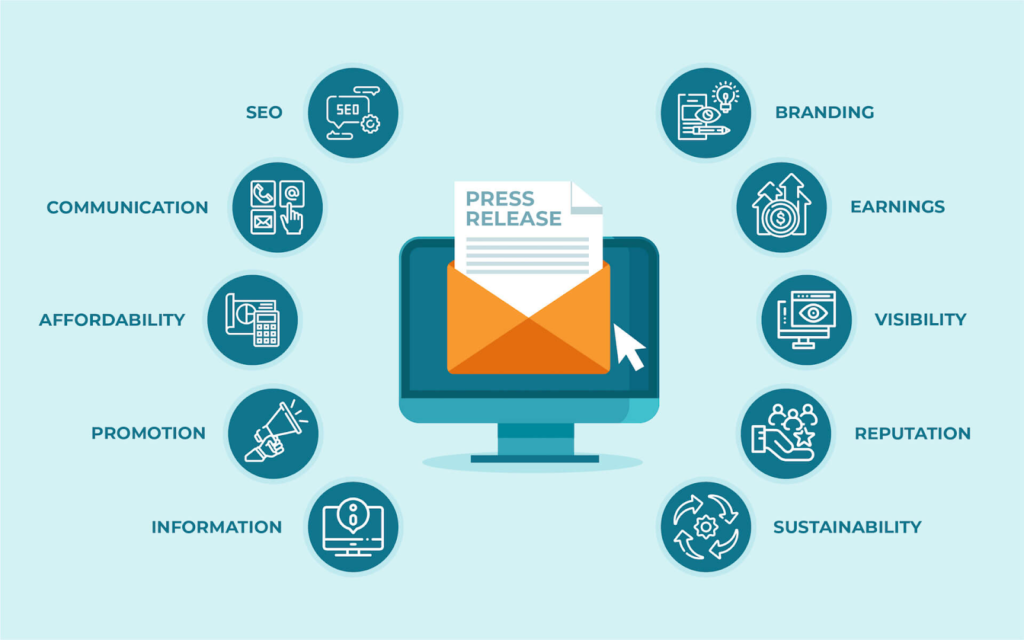In today’s competitive market, connecting with your audience on an emotional level can set your brand apart. Aesthetic empathy, the practice of aligning your brand’s visual and emotional elements with the feelings and experiences of your audience, is a powerful tool for enhancing brand experience and value. This blog explores how to effectively use aesthetic empathy to elevate your brand, ensuring it resonates deeply with your target audience.
Aesthetic Empathy
Aesthetic empathy involves creating an emotional connection through design and visual elements that resonate with your audience. It’s more than just pleasing aesthetics; it’s about understanding and reflecting the emotional needs and desires of your target market. By incorporating aesthetic empathy, your brand can foster a deeper connection with consumers, enhancing their overall experience and loyalty.
Understanding Aesthetic Empathy
Aesthetic empathy is the ability to perceive and respond to the emotional experiences of others through design and visual storytelling. It requires an understanding of how visual elements, colors, and designs can evoke specific feelings and moods. This empathetic approach helps brands create experiences that feel personalized and relevant, leading to a stronger emotional bond with their audience.
Identifying Your Brand’s Emotional Goals
Before you can use aesthetic empathy effectively, you need to define your brand’s emotional goals. What emotions do you want your brand to evoke? Are you aiming to inspire trust, joy, or excitement? Clearly identifying these goals will guide your design and communication strategies, ensuring that every element of your brand aligns with these emotional objectives.
Mapping Your Audience’s Emotional Journey
To effectively apply aesthetic empathy, you must understand your audience’s emotional journey. This involves mapping out their needs, desires, and pain points. Conduct surveys, gather feedback, and analyze customer behavior to gain insights into what resonates emotionally with your audience. This understanding will help you tailor your brand’s visual and emotional elements to better connect with them.
Integrating Aesthetic Empathy into Brand Design
Once you have a clear understanding of your audience and emotional goals, integrate aesthetic empathy into your brand design. This means using visual elements, such as logos, typography, and imagery, that align with the emotions you want to evoke. For example, if your brand aims to convey calmness and reliability, use soothing colors and simple, clean designs.
Crafting an Emotional Brand Story
An emotional brand story is a powerful way to engage your audience. Develop a narrative that reflects your brand’s values and resonates with the emotional experiences of your target market. Your story should be authentic and compelling, highlighting how your brand understands and addresses the emotional needs of your audience.
Utilizing Color Psychology
Color psychology plays a crucial role in aesthetic empathy. Different colors evoke different emotions and can significantly impact how your brand is perceived. For instance, blue often represents trust and stability, while yellow can evoke feelings of happiness and energy. Choose colors that align with your brand’s emotional goals and reinforce the feelings you want to inspire in your audience.
Designing User-Centric Experiences
User-centric design is key to creating memorable experiences. Consider how your audience interacts with your brand and design experiences that meet their emotional expectations. This includes everything from website design and product packaging to customer service interactions. A user-centric approach ensures that every touchpoint reflects your brand’s empathetic understanding of its audience.
Incorporating Emotional Triggers
Emotional triggers are stimuli that evoke specific feelings or reactions. Identify and incorporate these triggers into your brand’s design and communication strategies. This might include using nostalgic imagery, incorporating elements of surprise, or leveraging storytelling techniques that resonate with your audience’s experiences.
Aligning Brand Voice with Emotional Appeal
Your brand’s voice should complement its visual and emotional elements. Ensure that your messaging reflects the emotions you want to convey. For example, a brand that aims to evoke excitement and adventure should use energetic and dynamic language in its communications. Consistency between your brand’s voice and visual elements enhances overall empathy and connection.
Consistency Across Touchpoints
Maintaining consistency across all brand touchpoints is essential for reinforcing aesthetic empathy. Whether it’s your website, social media channels, or physical products, ensure that every interaction aligns with your brand’s emotional goals and design principles. Consistency builds trust and strengthens the emotional bond between your brand and its audience.
Measuring the Impact of Aesthetic Empathy
To gauge the effectiveness of your aesthetic empathy strategies, measure their impact on brand experience and value. Use metrics such as customer satisfaction surveys, engagement rates, and brand sentiment analysis to evaluate how well your design and emotional elements resonate with your audience. Regularly review these metrics to refine and improve your approach.
Case Studies of Successful Aesthetic Empathy Implementation
Examining successful case studies can provide valuable insights into how aesthetic empathy can enhance brand experience. For example, brands like Apple and Nike have effectively used design and emotional storytelling to create powerful connections with their audiences. Analyze these examples to understand how they implemented aesthetic empathy and apply similar strategies to your brand.
Common Mistakes and How to Avoid Them
Avoiding common mistakes is crucial for successfully implementing aesthetic empathy. Some pitfalls include:
- Ignoring Audience Needs: Failing to understand your audience’s emotional journey can lead to ineffective design and messaging.
- Inconsistent Branding: Inconsistencies in design or messaging can dilute the impact of your aesthetic empathy efforts.
- Overcomplicating Design: Complex designs can detract from the emotional message and confuse your audience.
Address these issues by conducting thorough research, ensuring consistency, and simplifying designs to enhance emotional clarity.
Future Trends in Aesthetic Empathy for Branding
As branding evolves, so does the concept of aesthetic empathy. Emerging trends include:
- Personalization: Tailoring experiences and designs to individual preferences and emotions.
- Interactive Design: Creating engaging and interactive experiences that foster deeper emotional connections.
- Sustainability and Ethics: Incorporating ethical practices and sustainable design elements that resonate with socially conscious consumers.
Staying updated on these trends will help you continually enhance your brand’s experience and value through aesthetic empathy.
FAQ:
1. What is aesthetic empathy in branding?
Aesthetic empathy involves designing and communicating in a way that aligns with the emotional needs and experiences of your audience. It’s about creating visual and emotional connections that resonate deeply with your target market.
2. How can aesthetic empathy enhance my brand’s value?
By aligning your brand’s design and messaging with the emotional experiences of your audience, aesthetic empathy can foster deeper connections, improve customer loyalty, and increase overall brand value.
3. What are some examples of aesthetic empathy in successful branding?
Brands like Apple and Nike effectively use aesthetic empathy through their sleek, emotional design and storytelling. These brands create strong emotional bonds with their audience by understanding and reflecting their desires and experiences.
4. How do I identify my brand’s emotional goals?
Determine the emotions you want your brand to evoke by reflecting on your brand’s core values, mission, and target audience. Conduct market research and gather customer feedback to understand the emotional impact you aim to achieve.
5. What is the role of color psychology in aesthetic empathy?
Color psychology involves using colors to evoke specific emotions. For instance, blue often represents trust and stability, while yellow can convey happiness and energy. Choosing colors that align with your brand’s emotional goals can enhance its empathetic connection with the audience.
6. How can I map my audience’s emotional journey?
Analyze your audience’s needs, desires, and pain points through surveys, feedback, and behavioral data. Understanding their emotional journey helps in designing experiences and messaging that resonate with their feelings and expectations.
7. What are emotional triggers and how should they be used?
Emotional triggers are stimuli that elicit specific emotional responses. Incorporate these triggers into your design and messaging to create a stronger emotional connection with your audience. This might include nostalgic elements, surprise features, or compelling storytelling.
8. How do I ensure consistency across all brand touchpoints?
Maintain consistency by applying your brand’s visual and emotional principles uniformly across all channels, including your website, social media, and physical products. Consistent branding reinforces your empathetic connection with your audience.
9. How can I measure the impact of aesthetic empathy on my brand?
Evaluate the impact through customer satisfaction surveys, engagement metrics, and brand sentiment analysis. These tools help assess how well your design and emotional elements resonate with your audience and influence their perception of your brand.
10. What are some common mistakes in applying aesthetic empathy and how can I avoid them?
Common mistakes include neglecting audience needs, inconsistent branding, and overcomplicated designs. Avoid these by thoroughly researching your audience, ensuring brand consistency, and keeping designs simple and clear to enhance emotional clarity.
11. How can I craft an emotional brand story?
Develop a narrative that reflects your brand’s values and resonates with your audience’s experiences. Your story should be authentic, engaging, and highlight how your brand understands and addresses the emotional needs of your audience.
12. What is the importance of a user-centric design approach?
User-centric design ensures that your brand’s experiences align with the emotional expectations and needs of your audience. This approach enhances the overall user experience and strengthens the emotional connection with your brand.
13. How do I align my brand’s voice with its emotional appeal?
Ensure that your brand’s voice and messaging reflect the emotions you want to convey. Use language that matches your brand’s emotional goals and complements its visual design to create a cohesive and empathetic brand experience.
14. What are some future trends in aesthetic empathy for branding?
Emerging trends include increased personalization, interactive design, and a focus on sustainability and ethical practices. Staying informed about these trends can help you continually enhance your brand’s experience and value.
15. Can you provide tips for implementing aesthetic empathy effectively?
Start by understanding your audience’s emotional needs, integrate empathetic design principles into your branding, and maintain consistency across all touchpoints. Regularly measure and refine your approach based on feedback and performance metrics.
Get in Touch
Website – https://www.webinfomatrix.com
Mobile - +91 9212306116
Whatsapp – https://call.whatsapp.com/voice/9rqVJyqSNMhpdFkKPZGYKj
Skype – shalabh.mishra
Telegram – shalabhmishra
Email - info@webinfomatrix.com







 English (US) ·
English (US) ·